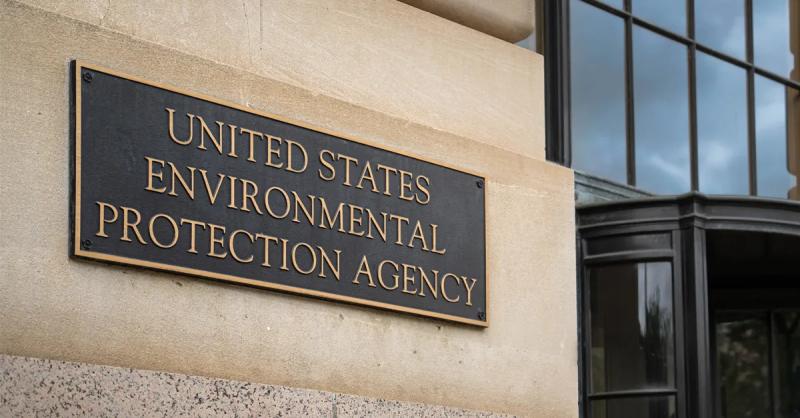
Trakref
The 2025 Legislative Outlook for Refrigerant Management

As we approach 2025, significant changes are anticipated in the landscape of refrigerant management regulations across the United States. Here’s what you need to know to stay compliant and ahead of the curve.
1. Expected Update to EPA Guidelines
The Environmental Protection Agency (EPA) is set to release an update to its guidelines concerning the management of certain Hydrofluorocarbons (HFCs) and substitutes under Subsection (h) of the AIM Act. This update, expected by the end of this summer, will likely introduce stricter controls and reporting requirements for businesses using HFCs. Companies should prepare for more rigorous compliance checks and potential changes in allowable substances.
The upcoming guidelines will be based on the proposed rule titled “Management of Certain Hydrofluorocarbons and Substitutes under Subsection (h) of the AIM Act.” These changes are part of the broader efforts to curb the environmental impact of HFCs. The EPA aims to implement an Emissions Reduction and Reclamation Program that includes several key components, including:
- Leak Repair Requirements: Stricter protocols for identifying and repairing leaks in refrigeration and air conditioning systems. This includes mandatory use of automatic leak detection systems to ensure timely identification and mitigation of leaks.
- Use of Reclaimed HFCs: Regulations to promote the use of reclaimed HFCs for certain types of equipment, thereby reducing the production of new HFCs.
- Cylinder Recovery and Tracking: Implementation of a container-tracking system to ensure the recovery of HFCs from cylinders before disposal.
- Alternative Recycling Criteria: Proposals for alternative recycling criteria for ignitable used refrigerants, leveraging the authority of the Resource Conservation and Recovery Act (RCRA).
Key Changes to Expect
The October 2023 rules represent the most comprehensive changes to refrigerant management since the 1994 Clean Air Act. Here are some of the major changes expected in the upcoming guidelines:
- New Triggers Related to Equipment Size and Global Warming Potential (GWP): The EPA has proposed lowering the threshold from 50 pounds to 15 pounds for refrigerant charges that trigger regulatory requirements. This change means that smaller systems, including those used in small businesses, may become subject to the same stringent regulations as larger systems.
- Enhanced Leak Repair and Management Practices: The new rules will require more frequent leak inspections and quicker repairs. Businesses will need to implement more robust record-keeping practices to document these activities.
- Stringent Reporting and Record-Keeping Requirements: Companies will be required to maintain detailed records of refrigerant usage, leak repairs, and reclamation activities. These records must be available for inspection at any time.
- Integration with Existing Programs: The updated rules will align with the Greenhouse Gas Reporting Program (GHGRP) and other existing EPA initiatives to ensure comprehensive management and reporting of HFC emissions.
Businesses should start preparing for these changes now to ensure compliance when the new rules take effect by assessing existing refrigeration and air conditioning systems to identify those impacted, investing in automatic leak detection systems and ensuring they are properly maintained and calibrated, developing and implementing comprehensive record-keeping systems to track refrigerant usage, leaks, and repairs, and training relevant staff on the new requirements and their roles in maintaining compliance. As the EPA finalizes these updates, it is crucial for businesses to stay informed and proactive in adapting their practices to meet the new standards, emphasizing the importance of robust refrigerant management in protecting the environment and ensuring regulatory compliance.
You may check EPA’s website for more information on this.

2. Amendments to New York’s Part 494
In New York, amendments to Part 494, Hydrofluorocarbon Standards and Reporting by the Department of Environmental Conservation (DEC) are on the horizon. These amendments aim to enhance the reporting standards and accountability for businesses using HFCs. As these changes unfold, businesses operating in New York will need to update their compliance strategies to meet the new requirements and ensure accurate and timely reporting.
The DEC is proposing amendments to 6 NYCRR Part 494, focusing on prohibitions, reporting, and other requirements regarding the sale, use, and supply of HFCs and new products and systems that contain HFCs. The goal of this proposed rule is to implement recommendations from the Climate Action Council Scoping Plan to achieve the required statewide greenhouse gas emission limits and the net zero goal outlined in the Climate Act.
The proposed amendments to Part 494 include several key elements:
- Prohibitions and Reporting Requirements: New regulations will prohibit certain uses of HFCs in specific end-uses, aligning with the EPA’s Significant New Alternatives Policy (SNAP) program. Businesses will need to comply with these prohibitions and maintain detailed records for administrative purposes.
- Enhanced Accountability: Companies will be required to submit regular reports on their use of HFCs, including data on sales, usage, and inventory of refrigerants. This enhanced accountability is designed to improve transparency and ensure that businesses adhere to environmental standards.
- Administrative and Record-Keeping Requirements: Manufacturers of products affected by these regulations must develop and maintain comprehensive administrative and record-keeping systems. This includes tracking the lifecycle of HFCs from acquisition through disposal.
As these amendments are finalized, it is crucial for businesses in New York to stay informed and proactive. Companies should begin by assessing their current use of HFCs and updating their compliance strategies to meet the new standards. This includes investing in robust record-keeping systems and ensuring that all relevant staff are trained on the new requirements.
3. Washington State’s Phased-in Regulations
Washington state continues its aggressive stance on HFC management with the next phase of its regulations set to impact medium-sized facilities. By March 15, 2026, facilities must register their assets, necessitating that facility managers start gathering the required information in the coming year to meet that requirement. The new requirements underscore the importance of early preparation and thorough documentation to meet the state’s enhanced refrigerant management standards.
Introduced in November 2023 and effective as of January 2024, the regulations focus on managing the environmental impact of HFCs. Established as Chapter 173-443 WAC, the rule targets HFCs and other fluorinated greenhouse gasses by setting maximum global warming potential (GWP) thresholds and mandating stringent management practices. These regulations aim to curb HFC emissions, which the state Department of Ecology estimates could account for 7-19% of global greenhouse gas emissions by 2050 if unaddressed.
Key Requirements for Compliance
Registration: Facilities must register their refrigeration and air conditioning systems based on the refrigerant charge size of their largest asset:
- Large facilities (>1,500 pounds): Registration by March 15, 2024
- Medium facilities (200-1,499 pounds): Registration by March 15, 2026
- Small facilities (50-199 pounds): Registration by March 15, 2028
Leak Inspection and Repair: Facilities must conduct regular leak inspections and repairs with a certified technician. The inspection schedule varies by asset size:
- Large assets: Monthly inspections
- Medium assets: Quarterly inspections
- Small assets: Annual inspections
Inspections are also required during verification tests, when refrigerant is added in significant amounts, or when oil residue indicates a potential leak. Leak rates must be calculated and monitored to ensure compliance with established thresholds:
- Cold Storage Warehouse or Retail Food Refrigeration: 16%
- Industrial Process Refrigeration (IPR): 24%
- Air Conditioning: 8%
Leaks must be repaired within 14 days of detection, a significantly shorter timeframe than the EPA’s 30-day requirement. Failure to repair leaks within this period may necessitate a retrofit or retirement plan for the leaking system.
Recordkeeping and Reporting: All facilities with systems containing a minimum of 50 pounds of high-GWP refrigerants (GWP greater than 150) must maintain comprehensive records from registration through the entire lifecycle of the refrigerant-containing system. Medium and large facilities must submit annual facility reports.
Impact and Preparation
The Department of Ecology anticipates that these regulations will have a significant environmental impact, equivalent to mitigating emissions from approximately 740,000 cars annually. Businesses of all sizes, especially those in commercial refrigeration, HVAC, and industrial sectors, will need to adapt their practices to comply with the new rules.
Facility managers should start gathering the necessary information for registration and enhance their documentation practices to ensure compliance. Investing in robust refrigerant management systems, like those offered by Trakref, can simplify compliance by providing timely alerts, recordkeeping, and guidance on regulatory standards.
With these new regulations, Washington state is setting a precedent for stringent HFC management, emphasizing the importance of proactive measures and detailed compliance strategies to protect the environment and meet state and federal guidelines.
For more information, check out our official deep dive into the Washington State Regulations.

4. California’s Climate Disclosure Rules
California is moving towards implementing stricter climate disclosure rules that will significantly impact refrigerant management reporting. While these new regulations may face delays, businesses should not become complacent. Staying informed and preparing for eventual compliance is crucial as these rules will likely require detailed disclosure of refrigerant usage and management practices, reinforcing California’s commitment to environmental transparency and accountability.
Overview of Proposed Regulations
The state of California has enacted three climate-related disclosure laws: S.B. 253, S.B. 261, and A.B. 1305. These laws focus on greenhouse gas (GHG) emissions, climate-related risks, and voluntary carbon offset transactions, respectively. However, proposed amendments are currently making their way through the legislative process, which could delay key compliance deadlines and relax some requirements.
S.B. 253: This law requires companies to disclose their GHG emissions, including Scope 1, Scope 2, and Scope 3 emissions. The proposed amendments would delay the initial compliance deadlines for these disclosures:
- CARB rules for reporting GHG emissions: From January 1, 2025, to January 1, 2027
- Scope 1 and Scope 2 reporting: Limited assurance from 2026 to 2028; reasonable assurance from 2030 to 2032
- Scope 3 reporting: From 2027 to 2029; with assurance from 2030 to 2032
S.B. 261: This law mandates companies to report on climate-related risks based on the Task Force on Climate-Related Financial Disclosures (TCFD) framework. The proposed amendments would delay the TCFD reporting requirements from 2026 to 2028.
A.B. 1305: This law requires companies to disclose their activities related to voluntary carbon offsets and emissions reduction claims. Proposed amendments clarify that these requirements only apply to activities occurring after January 1, 2025, and explicitly exclude certain renewable energy certificates (RECs) from being classified as voluntary carbon offsets.
Implications for Refrigerant Management
The amendments to S.B. 253 and S.B. 261 specifically target the reporting of GHG emissions and climate-related risks, which include the use and management of refrigerants. Businesses will need to ensure accurate and comprehensive reporting of refrigerant usage and emissions as part of their overall GHG disclosures. This includes:
- Detailed Disclosure: Companies must provide thorough documentation of refrigerant types, quantities, and leakage rates. Accurate record-keeping and regular audits will be essential to meet the new disclosure requirements.
- Environmental Accountability: The new rules reinforce California’s commitment to transparency in environmental practices. Companies will need to demonstrate their efforts in reducing refrigerant emissions and adopting sustainable practices.
- Preparation for Compliance: Despite potential delays, businesses should begin preparing now by enhancing their refrigerant management systems, training staff on new requirements, and developing robust data collection and reporting processes.
Preparing for Compliance
Businesses should take proactive steps to prepare for the forthcoming regulations:
- Enhance Record-Keeping: Implement comprehensive systems to track refrigerant usage, emissions, and leakage.
- Conduct Regular Audits: Perform frequent audits to ensure compliance with the new disclosure requirements and to identify areas for improvement.
- Invest in Training: Train staff on the new regulations and the importance of accurate reporting and environmental stewardship.
- Stay Informed: Keep abreast of legislative developments and be ready to adapt to any changes in the compliance deadlines or requirements.
By taking these steps, businesses can ensure they are well-prepared to meet California’s stringent climate disclosure rules.



